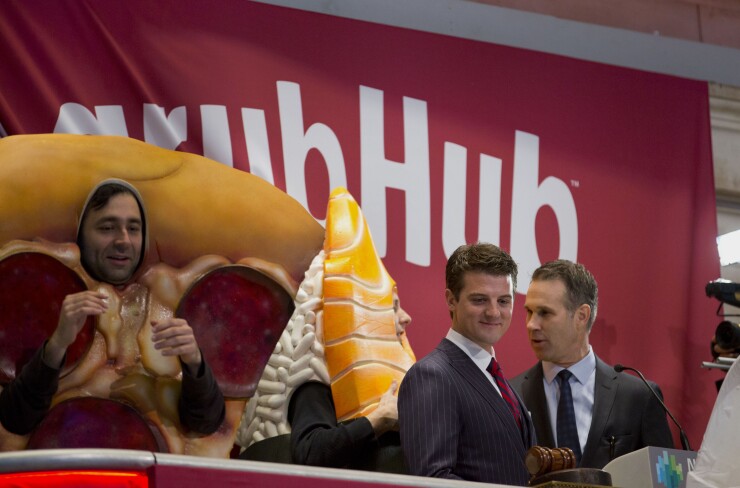Grubhub's deal to purchase of LevelUp, announced alongside its second-quarter earnings, is a deal that seems to make more sense for LevelUp — expanding its offerings to include delivery — than it does for the buyer.
LevelUp is very different business model from Grubhub, since the payments and rewards company is focused on the diner going to the restaurant for pickup through gamified incentives and rewards. Grubhub, by contrast, is a delivery service aggregator that did not previously participate inside the restaurant or offer its own point of sale hardware.
What LevelUp brings to the table is a plucky history of innovation. The Boston-based company's experiments included

“LevelUp has the best white-label POS technology for restaurants,” Grubhub CEO Matt Maloney said during an earnings conference call Wednesday morning. He further identifies the strength in the relationships LevelUp has fostered with restaurants to develop a personalized takeout dining experience that serves 100,000 orders a day. “This will help us replicate and scale that restaurant relationship and build their business on our platform.”
Grubhub said it would pay $390 million for LevelUp, funded through cash on hand and Grubhub's existing credit facility. It did not say when it expects the acquisition to close.
But if Grubhub doesn't share LevelUp's appetite for experimentation — and its tolerance for failure when those experiments flounder — LevelUp may meet the same fate as Eat24, a company Grubhub bought just last year.
Eat24 was a major contributor to Grubhub's second-quarter results in growth of active diners. But the Eat24 brand itself won't be staying around, according to Adam DeWitt, Grubhub's president and CFO.
In an email to customers, LevelUp assured customers that while some things will change, it will still operate as LevelUp. This is significant, since LevelUp's brand has been as much a selling point as its technology.
Its CEO, Seth Priebatsch, prefers to call himself the company's "chief ninja," and has given other executives playful titles such as
But underneath the playfulness is a company that has
LevelUp has also aggressively sought out fresh talent, such as
Perhaps that pluckiness will survive as part of Grubhub, which doesn't envision LevelUp as a major financial driver, contributing only $30 to $40 million in annual revenue.
The company has expanded into 70 new geographic markets year-to-date and has added new restaurants, including the Yum Brands’ KFC and Taco Bell stores, to further expand its business.
Revenue for Grubhub's second quarter was $239.7 million, up 51% from $158.8 million a year earlier. Net income was $30.1 million, up 104% from $14.8 million a year earlier.





